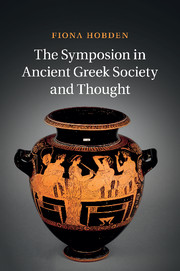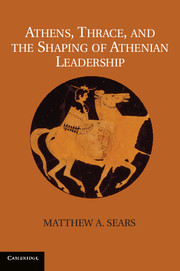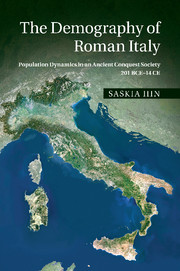Refine search
Actions for selected content:
23990 results in Ancient history
Acknowledgements
-
- Book:
- The Roman West, AD 200–500
- Published online:
- 05 March 2013
- Print publication:
- 07 March 2013, pp xiii-xiv
-
- Chapter
- Export citation
Figures
-
- Book:
- The Roman West, AD 200–500
- Published online:
- 05 March 2013
- Print publication:
- 07 March 2013, pp vi-xii
-
- Chapter
- Export citation
10 - Epilogue: AD 200–500, a coherent period?
-
- Book:
- The Roman West, AD 200–500
- Published online:
- 05 March 2013
- Print publication:
- 07 March 2013, pp 455-482
-
- Chapter
- Export citation
1 - Prologue:
-
- Book:
- The Roman West, AD 200–500
- Published online:
- 05 March 2013
- Print publication:
- 07 March 2013, pp 18-41
-
- Chapter
- Export citation
4 - Christianity and the traditional religions
-
- Book:
- The Roman West, AD 200–500
- Published online:
- 05 March 2013
- Print publication:
- 07 March 2013, pp 150-197
-
- Chapter
- Export citation
Copyright page
-
- Book:
- The Roman West, AD 200–500
- Published online:
- 05 March 2013
- Print publication:
- 07 March 2013, pp iv-iv
-
- Chapter
- Export citation
Bibliography
-
- Book:
- The Roman West, AD 200–500
- Published online:
- 05 March 2013
- Print publication:
- 07 March 2013, pp 483-521
-
- Chapter
- Export citation
3 - Reshaping the cities
-
- Book:
- The Roman West, AD 200–500
- Published online:
- 05 March 2013
- Print publication:
- 07 March 2013, pp 97-149
-
- Chapter
- Export citation
The Roman West, AD 200–500 - Title page
-
-
- Book:
- The Roman West, AD 200–500
- Published online:
- 05 March 2013
- Print publication:
- 07 March 2013, pp iii-iii
-
- Chapter
- Export citation
5 - Emperors and aristocrats in the late Roman West
-
- Book:
- The Roman West, AD 200–500
- Published online:
- 05 March 2013
- Print publication:
- 07 March 2013, pp 198-263
-
- Chapter
- Export citation
7 - The economy of the late Roman West
-
- Book:
- The Roman West, AD 200–500
- Published online:
- 05 March 2013
- Print publication:
- 07 March 2013, pp 303-337
-
- Chapter
- Export citation
6 - Rural settlement and economy in the late Roman West
-
- Book:
- The Roman West, AD 200–500
- Published online:
- 05 March 2013
- Print publication:
- 07 March 2013, pp 264-302
-
- Chapter
- Export citation
The Roman West, AD 200–500 - Half title page
-
- Book:
- The Roman West, AD 200–500
- Published online:
- 05 March 2013
- Print publication:
- 07 March 2013, pp i-ii
-
- Chapter
- Export citation
A note on places and maps
-
- Book:
- The Roman West, AD 200–500
- Published online:
- 05 March 2013
- Print publication:
- 07 March 2013, pp xv-xvi
-
- Chapter
- Export citation

The Symposion in Ancient Greek Society and Thought
-
- Published online:
- 05 March 2013
- Print publication:
- 21 February 2013

Athens, Thrace, and the Shaping of Athenian Leadership
-
- Published online:
- 05 March 2013
- Print publication:
- 25 March 2013

The Roman West, AD 200–500
- An Archaeological Study
-
- Published online:
- 05 March 2013
- Print publication:
- 07 March 2013

The Demography of Roman Italy
- Population Dynamics in an Ancient Conquest Society 201 BCE–14 CE
-
- Published online:
- 05 March 2013
- Print publication:
- 14 February 2013
Copyright page
-
- Book:
- The Symposion in Ancient Greek Society and Thought
- Published online:
- 05 March 2013
- Print publication:
- 21 February 2013, pp iv-iv
-
- Chapter
- Export citation
Introduction - Talking about thesymposion
-
- Book:
- The Symposion in Ancient Greek Society and Thought
- Published online:
- 05 March 2013
- Print publication:
- 21 February 2013, pp 1-21
-
- Chapter
- Export citation
